(IN CELEBRATION OF A GENRE BY KEVIN RENICK, FEATURING A NEVER-PUBLISHED SURVEY)
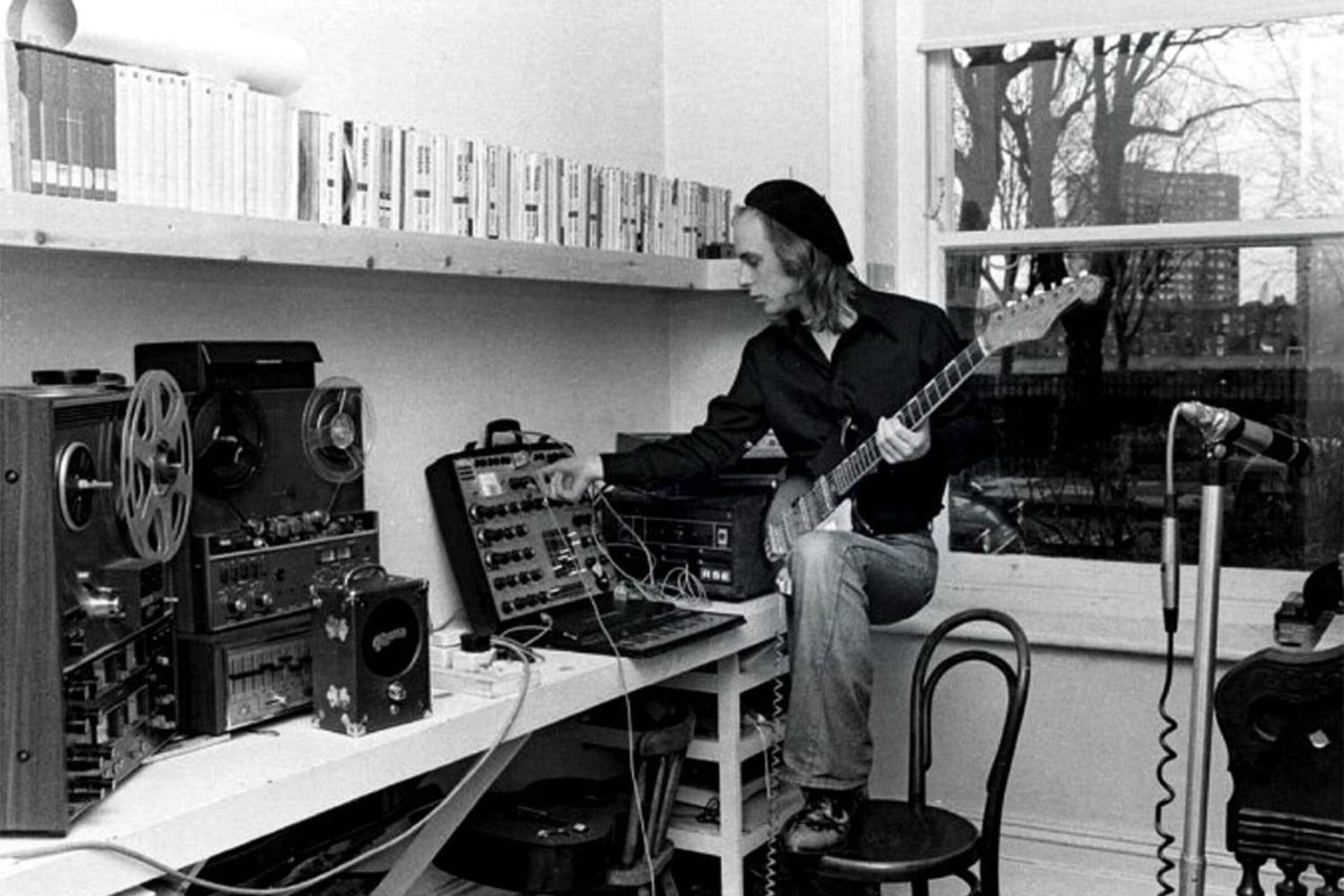
Pretty much everyone has heard of ambient music by now; if asked, the average person will say something like, “Oh, it’s that quiet background music that people use for relaxation and meditation and stuff.” Anyone who follows music or online music sites will likely know that Brian Eno had something to do with the founding/popularization of the genre, and a growing number of listeners may even be able to namedrop some of the more popular artists in this realm, such as William Basinski, Steve Roach, Tim Hecker, Stars of the Lid, et al. Ambient music has been around for roughly half a century (I’ll get to why Brian Eno’s DISCREET MUSIC from 1975 was arguably the first TRUE ambient recording in a bit here), but for most of that time it was very much a cult thing, something that a handful of enthusiasts and enlightened music writers would have quiet conversations about here and there. As the internet evolved and came into widespread use in the mid-to-late ‘90s, the phenomenon of “listserves” and chat groups allowed fellow ambient lovers to find each other and bond over this rapidly growing sonic universe, and it helped that the ‘90s saw some of the most important and influential ambient pioneers of all time releasing major, enduring works… this included such names as Pete Namlook (and his wildly prolific German label FAX), Aphex Twin, Future Sound of London, the Orb and so many, many others. By the early 2000s, specific ambient review pages were springing up all over the internet, and “fan groups” were no longer something reserved just for major pop and rock stars. You could find ambient information pages with just a casual google search by 2010, and virtually any popular ambient artist had a fan page and possibly even a separate Facebook discussion group. The main Brian Eno page on Facebook, “Before and After Ambient,” grew to well over 10,000 members by about 2020, and the genre itself, once a rarefied category, became more and more popular as enthusiasts spread the word electronically and as ambient music began to get used in films more and more. Michael Mann’s HEAT and Peter Jackson’s THE LOVELY BONES were just two of many films whose soundtracks were largely ambient (the latter actually featured Brian Eno substantially). And a curious thing happened when the pandemic struck; when people started staying inside more and more, many of them “found” ambient music and discovered it was perfect for this new, nearly apocalyptic age. The drones, tinkles and strange lush chordings of this electronic sub-genre were a darn good soundtrack for a world in which death or detachment might be uppermost in the minds of average citizens. The New York Times itself published a major piece extolling the virtues of ambient for this modern age, and Brian Eno, godfather of the whole ambient universe, finally saw the ideas he generated that were once frowned upon by snottier critics and snobbier listeners, practically enter the mainstream, now fully embraced by an audience that had their minds opened wider by all that was available. Ambient is now here to stay, and most major music sites regularly publish lists of “Best Ambient Recordings,” with PITCHFORK doing an ambitious piece of “50 All Time Best Ambient” just a few years ago; I recall that list generating a ton of controversy because not everyone agreed on the choices. You expect that sort of thing with Rock, of course. But AMBIENT? Causing people to argue over what mattered most? Bet Eno himself couldn’t have seen THAT one coming.

So I say all that by way of introduction, but… ambient is a deeply personal and cherished music world to me. And yes, I’m gonna give myself a pat on the back… I was there from the beginning. Listening to TV and movie theme music (STAR TREK was influential for me), and hiking in the woods a lot as a teenager gave me absolute primed receptors for the kind of mysterious, foggy sound world that was about to emerge in the ‘70s. I already knew stuff by Tangerine Dream, Mike Oldfield and a few others, but I discovered Brian Eno in 1975, and that was momentous beyond words. I bought ANOTHER GREEN WORLD like tons of other fans, but it was DISCREET MUSIC that altered my trajectory as a listener. It came out that same year, with a technical essay on the back cover explaining how the music was made, and a weird almost all-black cover signifying this as an OBSCURE LABEL release. That was Eno’s boutique label in which he produced and brought the world a series of experimental works by new composers who were not necessarily otherwise going to find popularity. Among the prominent releases were works by the great Harold Budd (another ambient pioneer), Gavin Bryars (his THE SINKING OF THE TITANIC was groundbreaking) and even Mister Silence himself, John Cage. My favorite version of his landmark piece “In a Landscape” appeared on the Eno-produced Obscure release. DISCREET MUSIC, however, was the biggie for me. Side One was a 20+ minute piece that featured lulling, goosebump-raising minimalist tones that sounded like they were far, far away, the dreamlike beckoning to a place of peace and beauty that you wished SO much you could get to. But only COULD by listening to this album. I loved it not only as a soothing work of musical transcendence, but oddly, it became my “go-to” album for hangovers, of which I had a few during that era. Something about that gentle, entrancing sound was able to make me forget everything else, even discomfort. It’s influence on me cannot be overstated. But Eno was just warming up. I’d have to write a separate article on the man’s huge, overwhelming impact on my life (I wouldn’t even be a modestly successful musician without Eno’s influence), but for now, it’s worth recounting that just a few years after DISCREET MUSIC, Eno put out a little thing called AMBIENT 1: MUSIC FOR AIRPORTS. That was the album where he coined the term “ambient music,” and is generally considered the official START of the genre. PITCHFORK had it as #1 on their widely read list of the classics, and many people have written essays about this potent collection of four shimmery, drifty pieces featuring simple piano melodies, synthesizer and lilting female chorus vocals. I listened to MUSIC FOR AIRPORTS over and over and over, most notably during a time when I was housesitting for my parents’ friends for a six-month period in 1979. But just a year later, came the first of two stellar collaborations with Harold Budd, this one called AMBIENT 2: THE PLATEAUX OF MIRROR. Without question one of the most beautiful and tranquil ambient releases of all time, and STILL cherished. And then in 1982, Eno released AMBIENT 4: ON LAND. Sometimes it takes a while for a groundbreaking masterpiece to get its due, for the “new territory” that is staked out to fully get integrated by those who follow in its wake. But I didn’t have to wait, myself. I recognized ON LAND as a breathtaking, visionary leap forward right away; I became obsessed by it, in fact. It was literally a dream come true to experience this album. And so eager was I to thank Mister Brian Eno for what he’d done on this gem of an album, that I wrote him a long, long letter about it. I recall it being nearly 30 pages long. I had a LOT to say. I was in college at the time, and I spent several long sessions composing my letter… about how I’d dreamed of a music that could capture the rich experience of being out in the wilderness, how I enjoyed listening to birdsong and admired how Eno incorporated birds into the sonic fabric of some of his pieces, and how the very mysteriousness of ambient as a form was expanding in bold new ways, far from anything that could be talked about in the same breath as “new age” (which less experienced listeners often did) or the generic “mood music.” Nope, Eno had definitely conjured something brand new here, and my own world would never be the same.

Pleasingly, I was not the only one. While here and there I would run into another Eno fan who was intrigued with his experiments, it wasn’t until the computer age that I began to realize many other people not only loved Eno’s ambient music but in fact, were passionate about the genre itself. It was the late 90s when I learned about “Hyperreal,” an internet listserv for fans of this rapidly growing style of music. As I sit here writing this, I feel overwhelmingly nostalgic about the years I spent communicating with fellow enthusiasts in this group. We regularly exchanged lists of our favorite releases, argued about the difference between “ambient” and “new age,” and turned each other on to new stuff over and over. I learned about Pete Namlook and the FAX label in this group, which was very significant for me personally. And, I hungered for an updated “Most Popular Ambient” list after seeing modest lists done by one or two members in the period before I joined. So, in 2001, I volunteered to do a very intensive “Classic Ambient” survey, in which members would submit their list of ten favorite, or sometimes even twenty favorite ambient recordings of all time. But I wanted it to be even bigger… I decided to also contact some DJs on electronic music shows, and some music journalists who were NOT part of the Hyperreal group. I wanted this survey to really COUNT, for anyone interested in this still “relatively” rarefied type of music. The amount of time I spent on this thing and the good timing of it helped make this one of the most widely read and useful pieces I ever put on the internet. It is STILL online, in fact, though many of the individual pieces other members submitted are long gone, including the entire beautiful 2350.org website devoted to Pete Namlook. But you can still read my 2001 survey right here:
http://music.hyperreal.org/epsilon/info/2001_classic_ambient.html
Having been able to make a small contribution to the contextualization and popularity of ambient made me almost giddy, but I still wanted more. I did another survey five years later that I think vanished into the ether. And then, I repeated my intensive approach for a survey in 2015, right before the “ambient@hyperreal” group scattered in the wind, the victim of a changing world and rapidly evolving internet/social media universe in which there were simply too many groups to even keep up with anymore. The intimacy of Hyperreal and the many friends/colleagues I’d gotten to know there was not to come my way again. Yes, I joined many other groups, and pored through survey after survey of “Best Ambient”, “Most Influential Ambient,” et cetera. There is so much literature on the subject now (though not that many published BOOKS per se), that the connoisseur can just do a google search and find himself with stuff to read for DAYS. I do it often. But the internet – and social media – have taken over our lives these days, in a way that wasn’t quite the case in the early days of the millennium. Something is DIFFERENT now. In those old days, you would learn about what was SPECIAL by talking to a (relatively) small group of peers, checking it out for yourself, and probably buying it. Nowadays, EVERYTHING can be had easily. A millions different web sites will tell you what is truly special, even about ambient. Even REDDIT has ambient pages now, and for deep research, you can go to DISCOGS, which didn’t even exist back in the heady days I spoke of earlier. It’s all available: The music, the opinions, the listings, the “expert” opinions. You just gotta sift through it all yourself. That can be fun still, to be sure. But it can also be really, really tedious.

AMBIENT FAVORITES: THE 2015 SURVEY…
Anyway, in the spirit of the old days, I present here, for the first time, the complete unedited 2015 survey I conducted of Ambient FAVORITES. Votes came mostly from the members of Hyperreal, a truly dedicated group of ambient listeners that I miss very much. But they also include votes from music journalists familiar with electronic music. Each listing features the artist, the name of the particular album, and then the number of total votes that album received. As with any genre, ambient has branched out into “sub-genres”, something you quickly start to learn about when you explore this sonic terrain. It is beyond the scope of my little article here to go through all that, but here are a few examples: there is something called “dark ambient” (probably just what you think it is), “ethno-ambient,” “ambient classical,” “environmental ambient” (possibly redundant since it is ALL rather environmental, but the idea here is that such recordings tend to include more nature sounds or field recordings), et cetera. “Space music,” “drone” and even “IDM” (which stands for “intelligent dance music”) are recognized labels that very much can fall under the ambient banner. There’s plenty more, believe me.

I guess in conclusion, I would say that ambient has most certainly evolved into its own musical universe, with a zillion pathways you can explore. You could spend weeks on YouTube listening to stuff that is available without spending a cent, or you can find carefully curated Spotify playlists of splendid ambient selections. Or, you can do it old school, and actually PURCHASE the original discs, something I do proudly. That can be a challenge, frankly, as far too many ambient recordings, including nearly the entire FAX catalogue, were released in strictly limited editions. Yes, stuff is available on Ebay, and by God, a lot is still available on Amazon. But get it from the individual ambient labels if you can or the artists themselves. They put considerable effort into making their specialized music… wouldn’t you feel great supporting them? Sadly, I would say that at least half the ambient music made these days is only available via digital download. I know by direct communication with some artists that they just don’t go to the time and trouble to manufacture CDs anymore. But we loved those little plastic discs back in the days of Hyperreal, and some of us still play ’em. If I want my Stars of the Lid or Tim Hecker or Steve Roach or Biosphere or Harold Budd classics, I just go to my nice little shelves, where it’s all in alpha order. And yeah, I love the artwork, the vibes and reading the credits. It’s all part of the experience.
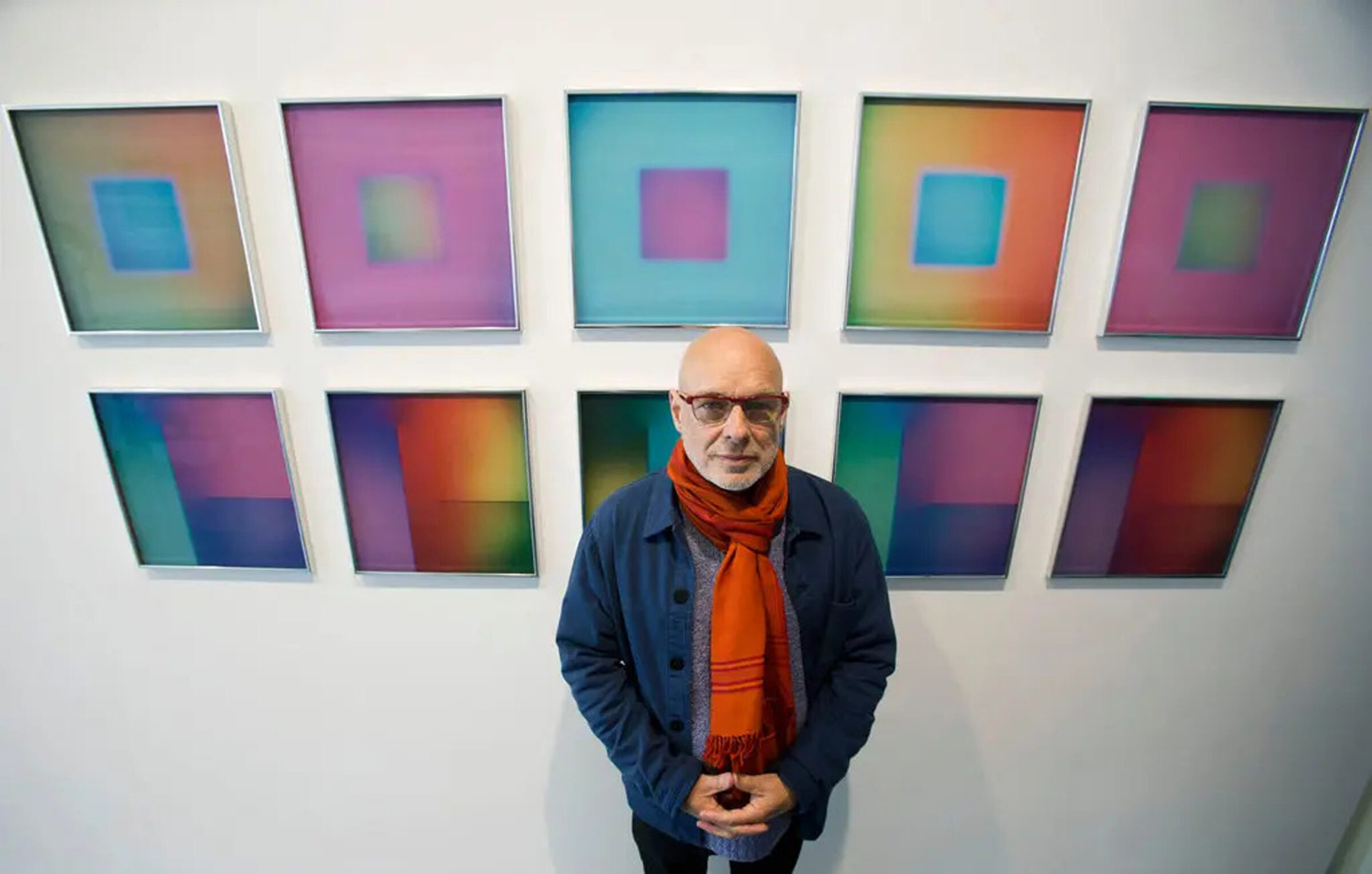
As I said, ambient will soon celebrate its 50th anniversary. 2022 was Brian Eno’s 50th anniversary as an active musician and recording artist… he was a founder member of Roxy Music in 1972, and some consider the first album he made with Robert Fripp the next year, NO PUSSYFOOTING, to be a progenitor of ambient. By any standard, Eno was the first major “name” in ambient. But that aside, if you have a taste for drifty, dreamy, droney (mostly) instrumental music that can transport you out of the dull doldrums of today’s world, it is well worth exploring what this thing called ambient is all about. And here’s what a bunch of us who love this stuff were wild about back in 2015. I present to you the full survey I did at the time, not available previously in this form…
BY THE NUMBERS: THE TOP 10…

1. Brian Eno – AMBIENT 4: ON LAND (1982) – 34 votes
2. Biosphere – SUBSTRATA (1997) – 27
3. Aphex Twin – SELECTED AMBIENT WORKS VOLUME 2 (1994) – 25
4. Brian Eno – APOLLO: ATMOSPHERES AND SOUNDTRACKS (1983) – 20
5. Global Communication – 76:14 (1994) – 18
6. Harold Budd/Brian Eno – AMBIENT 2: THE PLATEAUX OF MIRROR (1980) –
17
7. Harold Budd/Brian Eno – THE PEARL (1984) – 14
8. Steve Roach – STRUCTURES FROM SILENCE (1984) – 13
Stars of the Lid – THE TIRED SOUNDS OF (2001) – 13
10. Tetsu Inoue – AMBIANT OTAKU (1994) – 11
Steve Roach – MYSTIC CHORDS AND SACRED SPACES (2003) – 11
…AND THE REST
Brian Eno – AMBIENT 1: MUSIC FOR AIRPORTS (1978) – 10
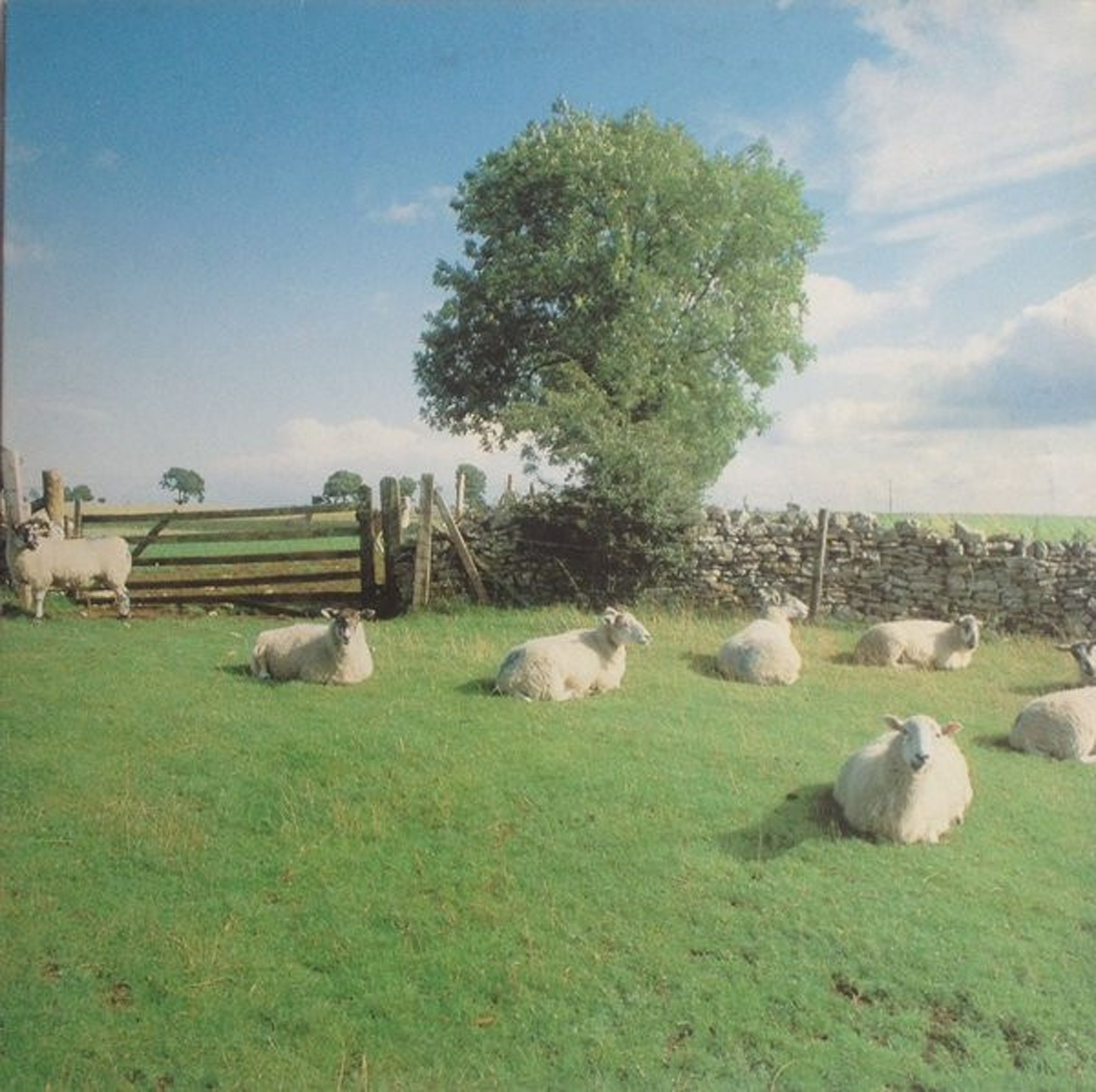
The KLF – CHILL OUT (1990) – 10
Robert Rich – SOMNIUM (2004) – 10
Steve Roach – DREAMTIME RETURN (1988) – 10
Stars of the Lid – AND THEIR REFINEMENT OF THE DECLINE (2007) – 10
Robert Rich & Alio Die – FISSURES (1997) – 9

Harold Budd/John Foxx – TRANSLUCENCE/DRIFT MUSIC (2011) – 8
Future Sound of London – LIFEFORMS (1994) – 8
Robert Rich – TRANCES/DRONES (1984) – 8
A Winged Victory For The Sullen – A WINGED VICTORY FOR THE SULLEN
(2011) – 8
Max Corbacho – ARS LUCIS (2009) – 7
Brian Eno – THURSDAY AFTERNOON (1985) – 7
Tetsu Inoue – WORLD RECEIVER (1996) – 7
Pete Namlook – AIR 2 (1994) – 7
Woob – 1194 (1994) – 7

Aloof Proof – PIANO TEXT (2007) – 6
Brian Eno – NEROLI (1993) – 6
Jon Hassell – LAST NIGHT THE MOON CAME DROPPING ITS CLOTHES…
(2009) – 6
James Johnson and Stephen Philips – LOST AT DUNN’S LAKE (2001) – 6
Lustmord and Robert Rich – STALKER (1995) – 6
Steve Roach – THE MAGNIFICENT VOID (1996) – 6
David Sylvian – PLIGHT AND PREMONITION (1988) – 6
Tangerine Dream – PHAEDRA (1974) – 6
Aphex Twin – SELECTED AMBIENT WORKS ’85-92 (1992) – 5

Fripp and Eno – EVENING STAR (1975) – 5
HIA/Biosphere – POLAR SEQUENCES (1996) – 5
ISHQ – ORCHID (2001) – 5
Pete Namlook – SILENCE V (2001) – 5
Vidna Obmana – LANDSCAPE IN OBSCURITY (1999) – 5
Steve Roach – QUIET MUSIC (1986) – 5
Steve Roach/Vidna Obmana – WELL OF SOULS (1995) – 5
Michael Stearns – PLANETARY UNFOLDING (1981) – 5

Tangerine Dream – RUBYCON (1975) – 5
The Dead Texan – THE DEAD TEXAN (2009) – 4
Deaf Center – PALE RAVINE (2005) – 4
Fripp and Eno – THE EQUATORIAL STARS (2004) – 4
Hammock – MAYBE THEY WILL SING FOR US TOMORROW (2008) – 4
Tim Hecker – RADIO AMOR (2012) – 4
Steve Hillage – RAINBOW DOME MUSIC (1991) – 4
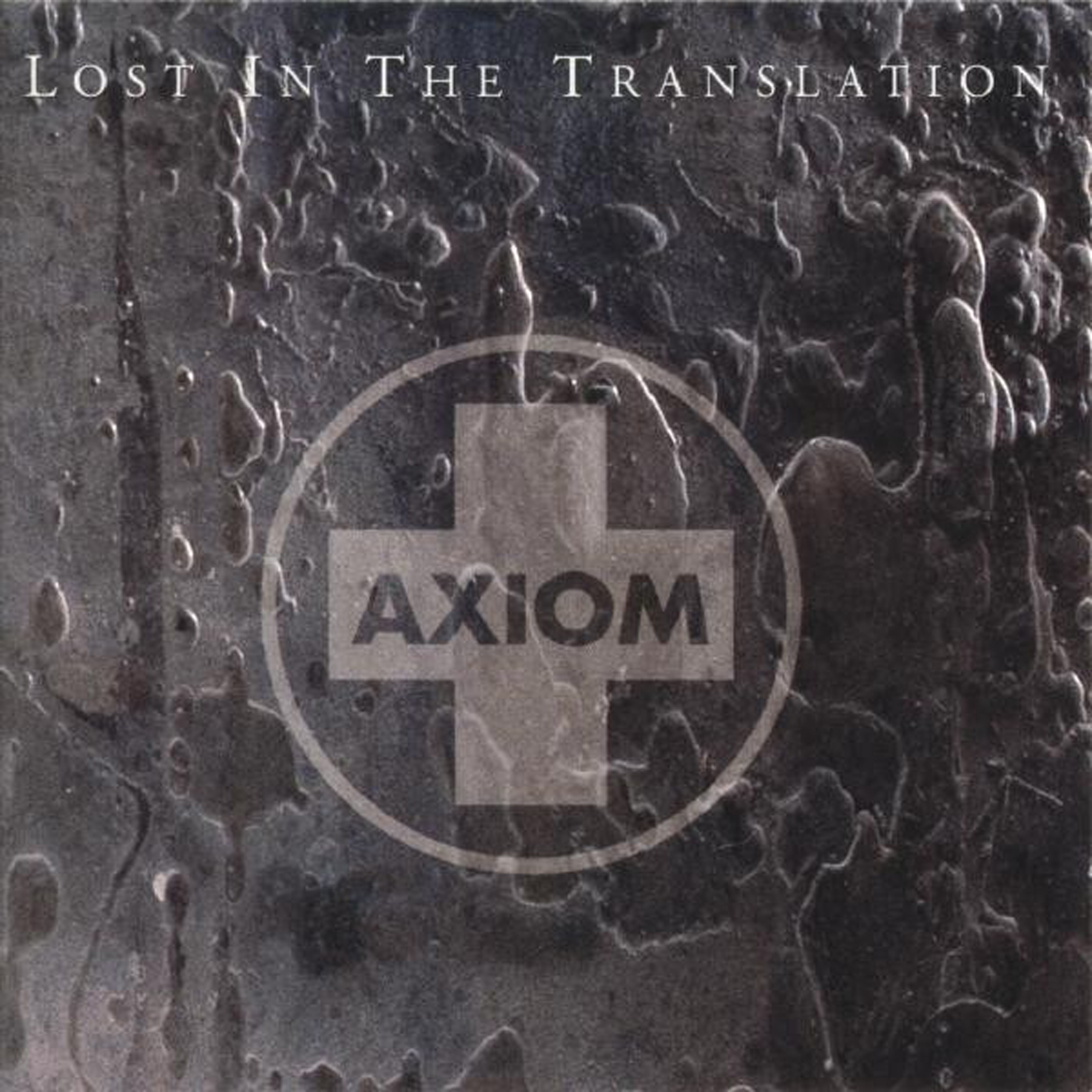
Bill Laswell – AXIOM AMBIENT: LOST IN THE TRANSLATION (1994) – 4
Pete Namlook – SILENCE (1993) – 4
Pete Namlook/Tetsu Inoue – 62 EULENGASSE (1995) – 4
Vidna Obmana – RIVER OF APPEARANCE (1996) – 4
The Orb – ORBUS TERRARUM (1995) – 4
Steve Roach – THE DREAM CIRCLE (1994) – 4
David Sylvian – GONE TO EARTH (second disc) (1986) – 4
Tangerine Dream – ZEIT (1971) – 4
TUU – ALL OUR ANCESTORS (1994) – 4
Kit Watkins – THOUGHT TONES VOL. 1 (1990) – 4

Autechre – AMBER (1994) – 3
Autumn of Communion – AUTUMN OF COMMUNION (2012) – 3
Biosphere – CIRQUE (2000) – 3
Biosphere – MICROGRAVITY (1991) – 3
Biosphere – SHENZHOU (2002) – 3
Boards of Canada – MUSIC HAS A RIGHT TO CHILDREN (1998) – 3
Harold Budd – AVALON SUTRA (2005) – 3
Stevie B-Zet – ARCHAIC MODULATION (1993) – 3
Carbon Based Lifeforms – WORLD OF SLEEPERS (2006) – 3
Coil – TIME MACHINES (2000) – 3
Alio Die – SUSPENDED FEATHERS (1996) – 3

Brian Eno – DISCREET MUSIC (1975) – 3
Gas – GAS (1996) – 3
Jeff Greinke – LOST TERRAIN (1992) – 3
Tim Hecker – HAUNT ME HAUNT ME DO IT AGAIN (2001) – 3
Tetsu Inoue – INLAND (2007) – 3
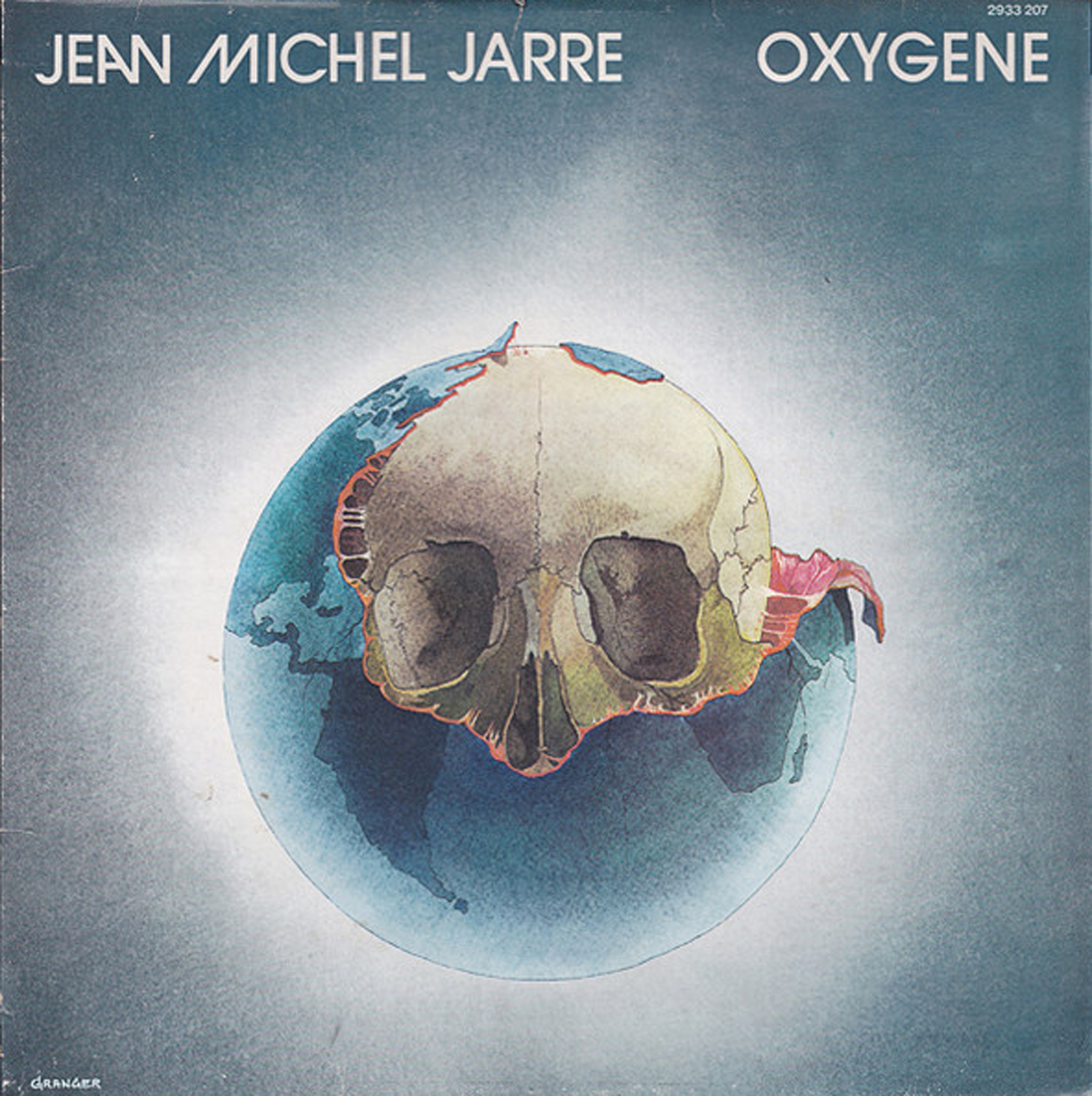
Jean-Michel Jarre – OXYGENE (1976) – 3
Thomas Koner – DAIKAN (2002) – 3
Thomas Koner – PERMAFROST (1993) – 3
Thomas Koner – TEIMO (1992) – 3
Loscil – PLUME (2006) – 3
Lustmord – THE PLACE WHERE THE BLACK STARS HANG (1997) – 3
Cliff Martinez – SOLARIS (soundtrack) (2002) – 3
Murcof – REMEMBRANZA (2005) – 3
Pete Namlook – AIR (1993) – 3
Pete Namlook/Tetsu Inoue – SHADES OF ORION 2 (1995) – 3
Pete Namlook/Tetsu Inoue – 2350 BROADWAY (1993) – 3
Pete Namlook/Geir Jenssen – THE FIRES OF ORK (1993) – 3
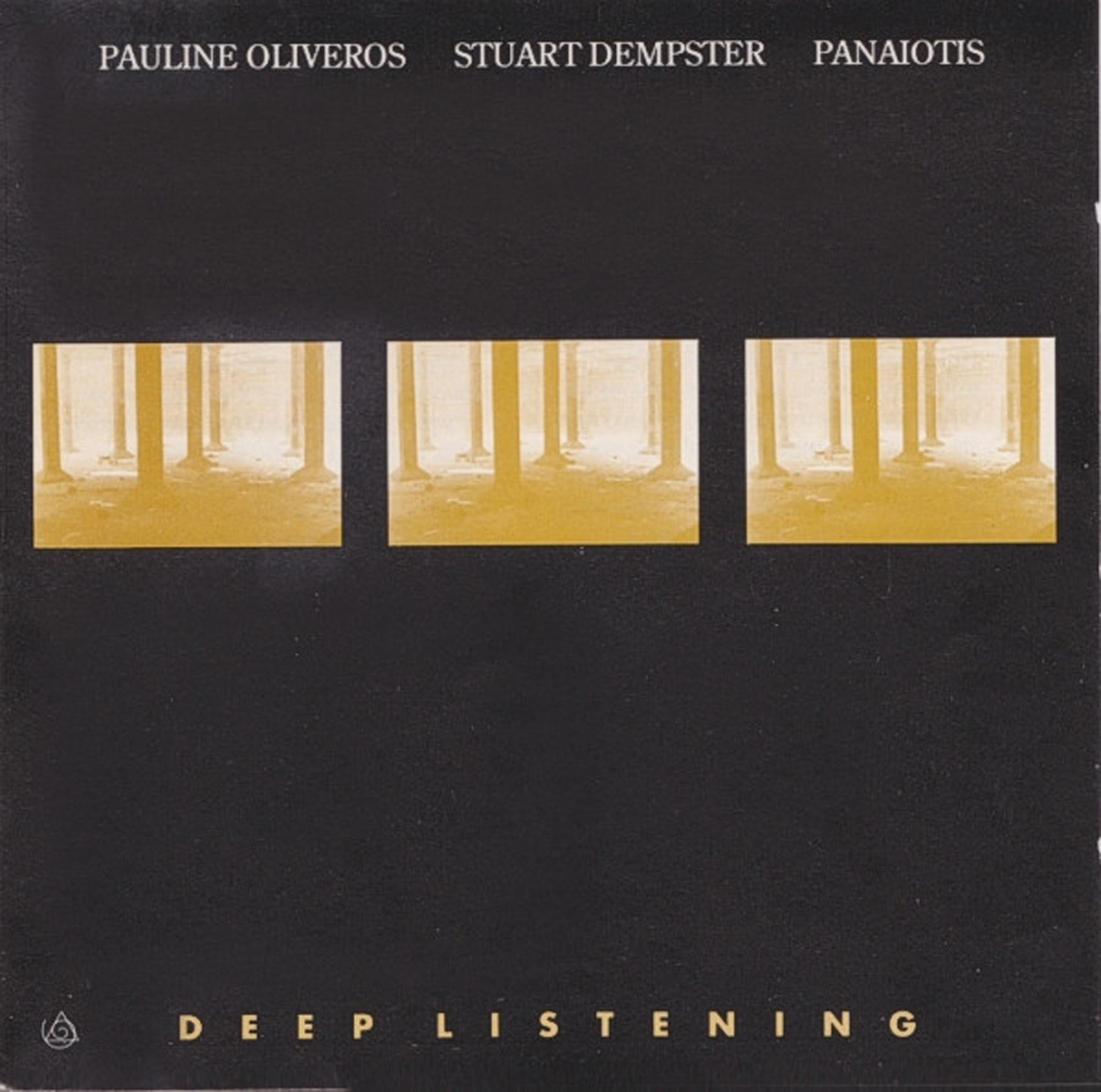
Pauline Oliveros/Stuart Dempster/Panaiotis – DEEP LISTENING (1989) – 3
Oophoi – HYMN TO A SILENT SKY (2005) – 3
The Orb – ADVENTURES BEYOND THE ULTRAWORLD (1991) – 3
O Yuki Conjugate – EQUATOR (1995) – 3
Jeff Pearce – DAYLIGHT SLOWLY (1998) – 3
Jeff Pearce – TO THE SHORES OF HEAVEN (2000) – 3
Max Richter – THE BLUE NOTEBOOKS (2004) – 3
Riceboy Sleeps – RICEBOY SLEEPS (2009) – 3
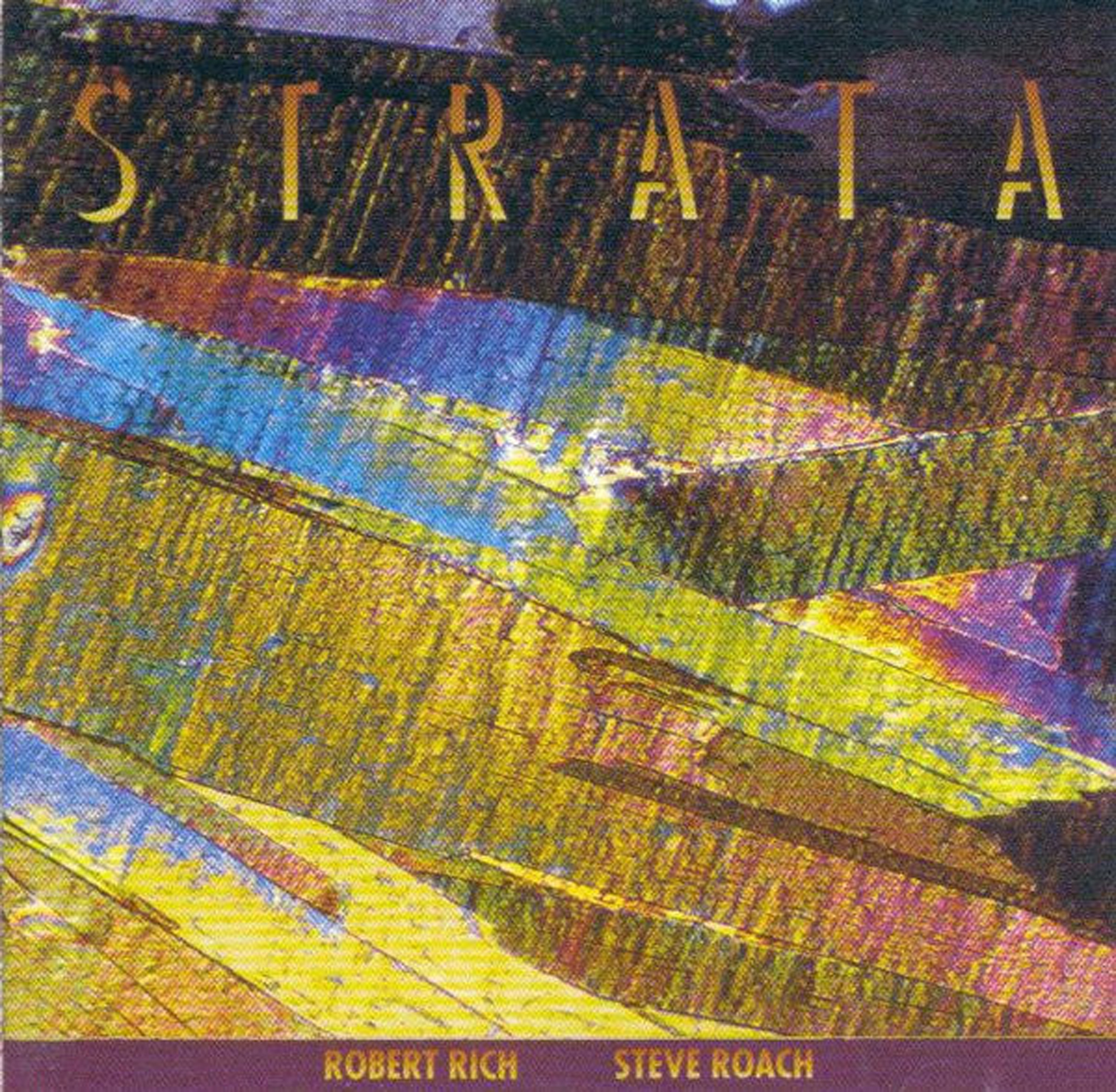
Steve Roach/Robert Rich – STRATA (1990) – 3
Steve Roach – DYNAMIC STILLNESS (2009) – 3
Klaus Schulze – MIRAGE (1977) – 3
Klaus Schulze – TIMEWIND (1975) – 3
Shuttle 358 – UNDERSTANDING WILDLIFE (2002) – 3
Sleep Research Facility – NOSTROMO (2001) – 3
David Sylvian – ALCHEMY (1985) – 3
David Sylvian – APPROACHING SILENCE (1999) – 3
Vangelis – BLADE RUNNER (OST) (1993) – 3
Paul Vnuk Junior – SILENCE SPEAKS IN SHADOW (2001) – 3
Yagya – RIGNING (2009) – 3
Susumu Yokoto – SAKURA (2000) – 3

Another Fine Day – LIFE BEFORE LAND (1994) – 2
A Produce – SMILE ON THE VOID (2001) – 2
Olafur Arnalds – FOR NOW I AM WINTER (2013) – 2
Autumn of Communion – AUTUMN OF COMMUNION 2 (2013) – 2
Baked Beans – BAKED BEANS (1993) – 2
William Basinski – THE DISINTEGRATION LOOPS (2002) – 2
Beautumn – WHITE COFFEE (2005) – 2
David Behrman – ON THE OTHER OCEAN (1977) – 2
Biosphere – DROPSONDE (2005) – 2
Thom Brennan – SILVER (2005) – 2
Thom Brennan – VIBRANT WATER (2000) – 2

Gavin Bryars – THE SINKING OF THE TITANIC (1975) – 2
Harold Budd – THE PAVILION OF DREAMS (1978) – 2
Harold Budd – THE WHITE ARCADES (1988) – 2
Bvdub – SONGS FOR A FRIEND I LEFT BEHIND (2011) – 2
Carbon Based Lifeforms – HYDROPONIC GARDEN (2003) – 2
Carbon Based Lifeforms – TWENTYTHREE (2011) – 2
Cluster and Eno – CLUSTER AND ENO (1977) – 2
Max Corbacho – BREATHSTREAM (2008) – 2
Danna and Clement – NORTH OF NIAGARA (1995) – 2
Deep Space Network and Doctor Atmo – I.F. 2 (1994) – 2
Vladislav Delay – ANIMA (2001) – 2
Alio Die and Antonio Testa – REVERIE (2012) – 2
Fennesz – BLACK SEA (2008) – 2
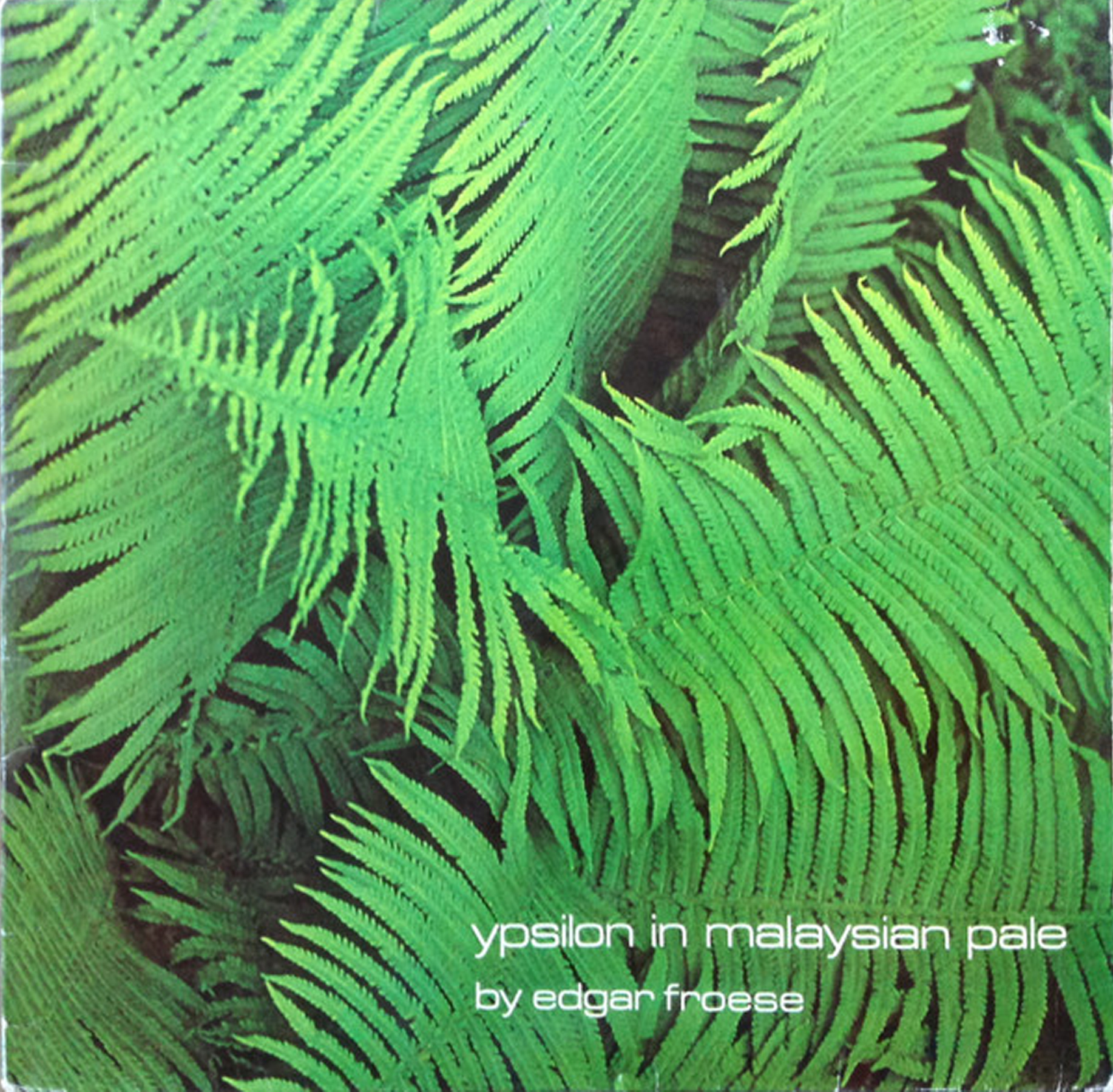
Edgar Froese – YPSILON IN MALAYSIAN PALE (1975) – 2
Future Sound of London – ISDN (1994) – 2
Peter Gabriel – PASSION (soundtrack) (1989) – 2
Gas – KONIGSFORST (1998) – 2
Gas – ZAUBERBERG (1997) – 2
Gas – POP (2000) – 2
Global Communication – PENTAMEROUS METAMORPHOSIS (1993) – 2
Harmonia – MUSIK VON HARMONIA (1974) – 2
Jon Hassell – DREAM THEORY IN MALAYA (1981) – 2
Jon Hassell – THE SURGEON OF THE NIGHT SKY RESTORES DEAD
THINGS… (1987) – 2
Heavenly Music Corporation – CONSCIOUSNESS III (1994) – 2
Tim Hecker – HARMONY IN ULTRAVIOLET (2009) – 2

Tim Hecker – RAVEDEATH, 1972 (2011) – 2
Hecq – NIGHT FALLS (2008) – 2
H.I.A./Biosphere – BIRMINGHAM FREQUENCIES (2000) – 2
Michael Hoenig – DEPARTURE FROM THE NORTHERN WASTELAND
(1978) – 2
H.U.V.A. Network – EPHEMERIS (2009) – 2
Tetsu Inoue – ORGANIC CLOUD (1995) – 2
Tetsu Inoue – ZENITH (1994) – 2
Tetsu Inoue/Jonah Sharp – ELECTROHARMONIX (1994) – 2
Irezumi – ENDURANCE (2008) – 2
The Irresistible Force – FLYING HIGH (1992) – 2
The Irresistible Force – IT’S TOMORROW ALREADY (1998) – 2
Johann Johannsen – FORDLANDIA (2008) – 2
James Johnson – SURRENDER (1999) – 2
James Johnson/Robert Scott Thompson – FORGOTTEN PLACES (2001) – 2
Journeyman – MAMA 6 (1994) – 2
The KLF – SPACE AND CHILLOUT (1995) – 2
Koda – MOVEMENTS (2004) – 2
Thomas Koner – AUBRITE (1995) – 2
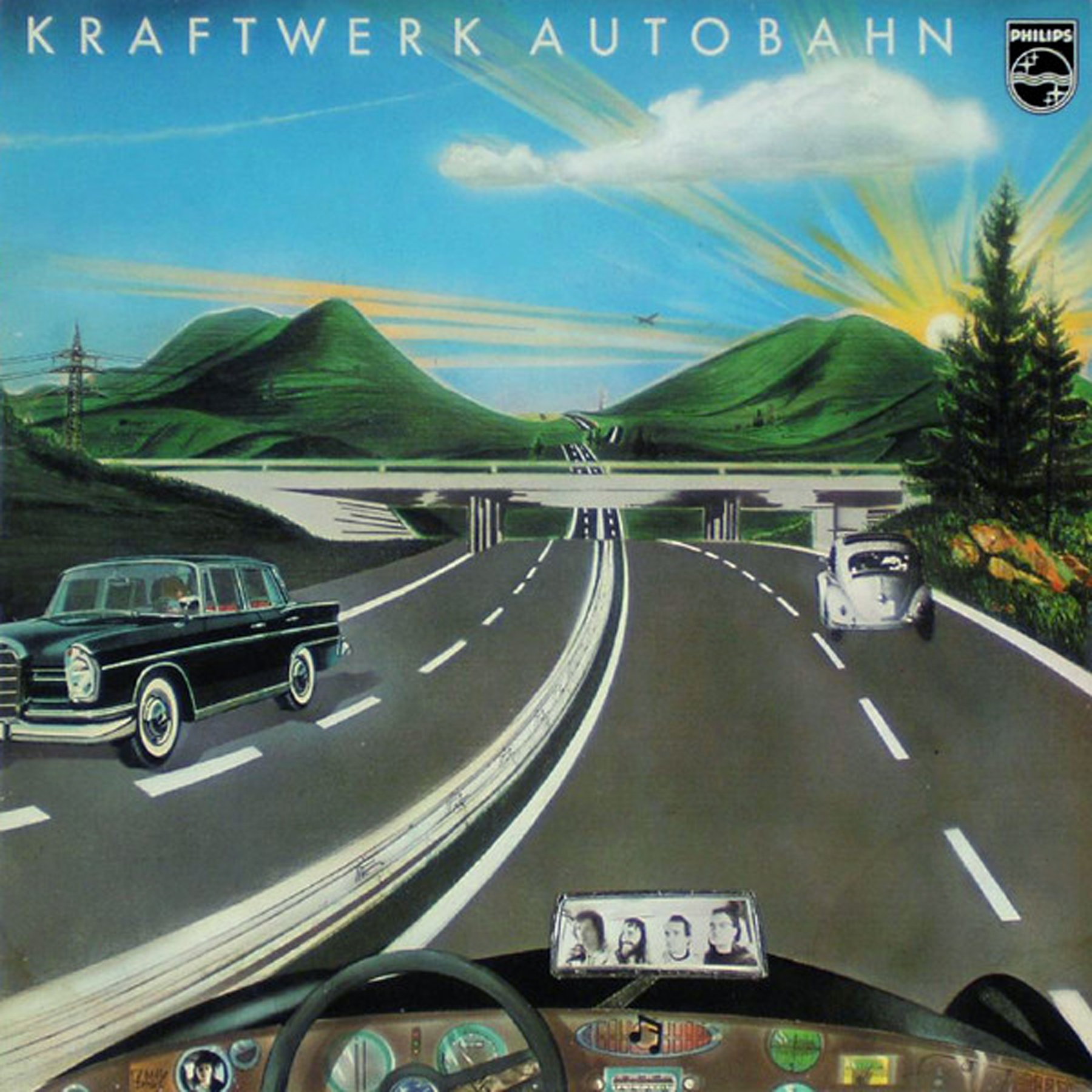
Kraftwerk – AUTOBAHN (1974) – 2
Loscil – FIRST NARROWS (2004) – 2
Loscil – SEA ISLAND (2014) – 2
Loscil – SUBMERS (2002) – 2
Lull – COLD SUMMER (1994) – 2
Marconi Union – A LOST CONNECTION (2008) – 2
An Mlo Production – LO (1994) – 2
Modeste – A MOUNTAIN OF CONVENIENCE (2009) – 2
Pete Namlook – SILENCE II (1993) – 2
Pete Namlook – SPRING (1994) – 2
Pete Namlook – SUMMER (1995) – 2
Pete Namlook/H.I.A. – S.H.A.D.O. (1997) – 2
Numina – SANCTUARY OF DREAMS (2004) – 2
Vidna Obmana – THE SURREAL SANCTUARY (2000) – 2
Vidna Obmana – THE TRILOGY (1996) – 2
Oophoi – ATHLIT (2002) – 2
Oophoi – THE SPIRALS OF TIME (1998) – 2
The Orb – POMME FRITZ (1994) – 2
Stephen Philips – DESERT LANDSCAPES (1998) – 2
Pub – DO YOU EVER REGRET PANTOMIME? (2001) – 2
Robert Rich – BELOW ZERO (1998) – 2
Robert Rich – HUMIDITY (2000) – 2
Robert Rich – NEST (2012) – 2

Terry Riley – A RAINBOW IN CURVED AIR (1969) – 2
Steve Roach – ATMOSPHERIC CONDITIONS (1999) – 2
Steve Roach – MIDNIGHT MOON (2000) – 2
Steve Roach – ARTIFACTS/ORIGINS (1994) – 2
Steve Roach/Vidna Obmana – ASCENSION OF SHADOWS (1999) – 2
Steve Roach/Robert Rich – SOMA (1992) – 2
Steve Roach/Vir Unis – BLOOD MACHINE (2001) – 2
Bruno Sanfilippo/Mathias Grassow – CROMO (2010) – 2
Paul Schutze – APART (1995) – 2
Jonn Serrie – AND THE STARS GO WITH YOU (1988) – 2
Adham Shaikh – JOURNEY TO THE SUN (1995) – 2
Shuttle 358 – OPTIMAL (1999) – 2
Solar Fields – EXTENDED (2005) – 2
Solar Quest – ORGSHIP (1994) – 2
Spacetime Continuum – ALIEN DREAMTIME (1993) – 2
Stars of the Lid – AVEC LAUDENUM (2002) – 2
Michael Stearns – THE LOST WORLD (1995) – 2
Saul Stokes – OUTFOLDING (2000) – 2
Saul Stokes – ZO PILOTS (1998) – 2
Tim Story – BEGUILED (1991) – 2
Sun Electric – 30.7.94 LIVE (1995) – 2
Suspended Memories – FORGOTTEN GODS (1992) – 2
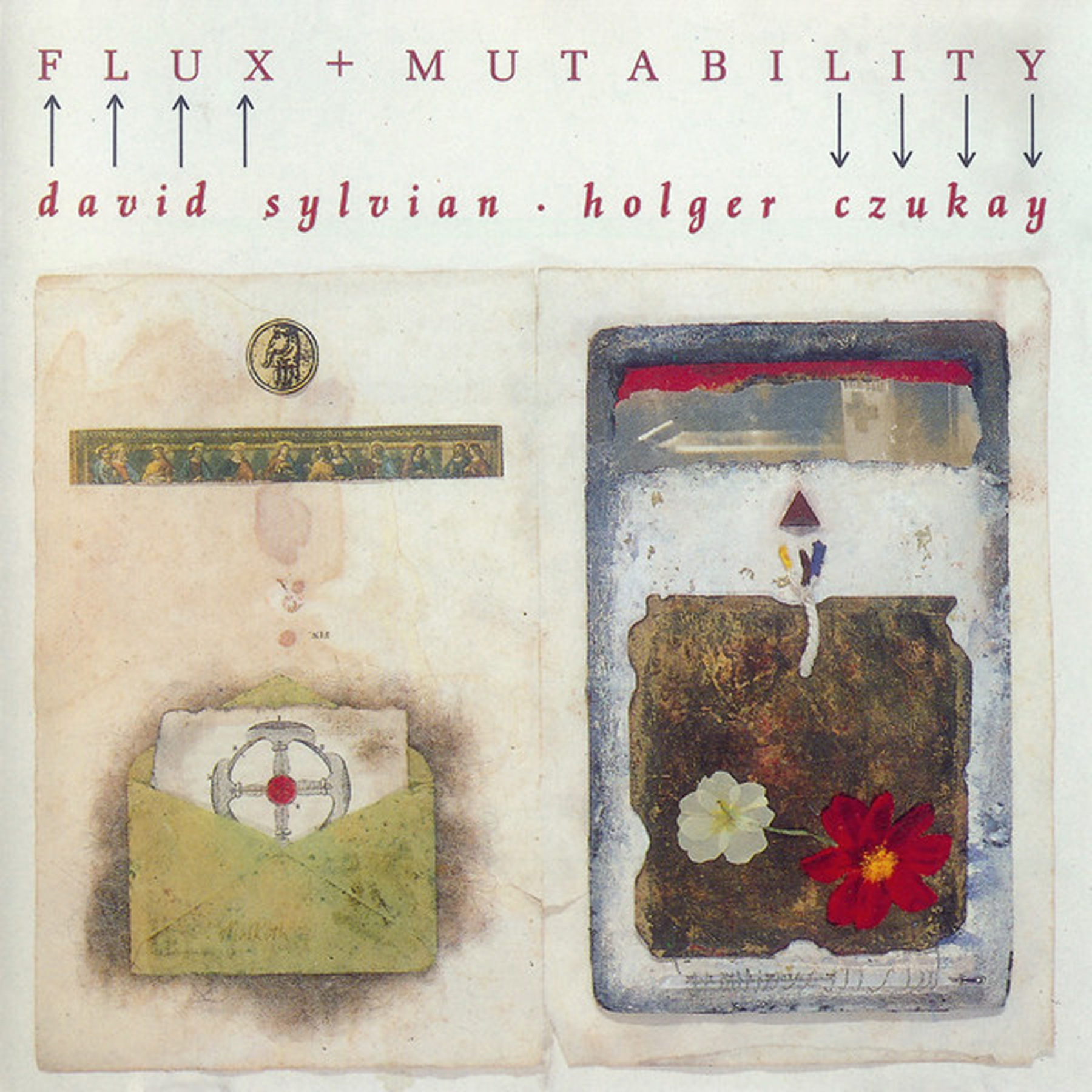
David Sylvian/Holger Czukay – FLUX AND MUTABILITY (1989) – 2
David Tagg – WAIST DEEP IN SEAS OF MILK (2007) – 2
Vangelis – BEAUBOURG (1978) – 2
Vangelis – L’APOCALYPSE DES ANIMAUX (1973) – 2
Various Artists – A STORM OF DRONES: THE SOMBIENT TRILOGY (1995) – 2
Wagon Christ – PHAT LAB NIGHTMARE (1994) – 2
A Winged Victory For The Sullen – ATOMOS (2014) – 2
Woob – WOOB 2 (1995) – 2
Zero Ohms – 369 (2013) – 2
IN SEARCH OF YOUR “BLUE DIAMONDS”
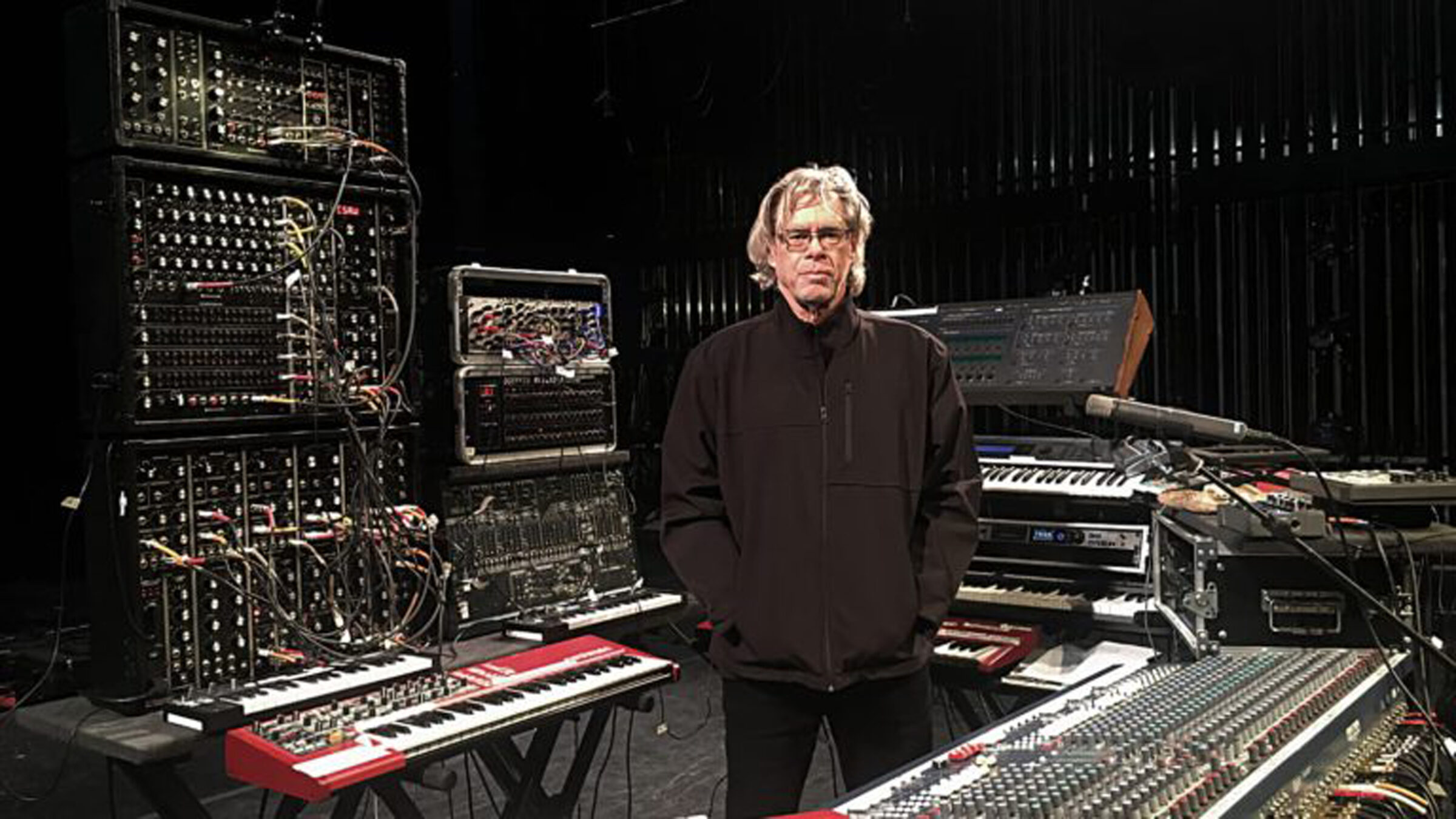
As I stated in my main essay about ambient music, there’s a tendency towards “Best of” lists that seems more suited to this genre than others. Ambient is NOT a universally adored style of music; it’s generally quiet, non-flashy and suitable more for private reflection than the kind of communal involvement prevalent in rock & roll or country, for example. It’s rare to find ambient connoisseurs passionately debating ANY particular issue… most agree Brian Eno was either the godfather or the “chief contextualizer” of the genre (unequivocally he’s the one who NAMED the genre), and you might see the occasional thread about whether it can still be called “ambient” if it has vocals or drums; I remember debates about that back in the Hyperreal days early in the millennium, along with the always fascinating “How does ambient differ from new age?” discussion. I like that one, myself. But fans take this music PERSONALLY, and they love their lists. In the three giant surveys I did in the Hyperreal era, participation was pretty enthusiastic, and everyone wanted to know what everyone ELSE voted for. Nowadays, you can hop on the DISCOGS site or “Rate Your Music” and find lists of global ambient favorites with just a few clicks. Yes, people are still listmaking, and it does my heart good to see that this genre I love so much still has a large following, and even shines a light on obscure or new but maybe under-promoted releases quite often. For anyone ignorant enough of the style to say something like “Isn’t it all just a bunch of droney background noise or synthesizer squiggles?”, well, we enthusiasts will respond “NO!” very aggressively. If you spend any time at all exploring the ambient world, you’ll find startling variety. Sure, synthesizers and keyboards are used routinely, but so are strings (“ambient classical” is a thing), guitars, cellos, brass, field recordings and yes, vocals sometimes. Part of the thrill of being an ambient lover is finding stuff that sounds like nothing you’ve ever heard before. When Eno released the landmark ON LAND, reviewers and fans alike marveled at how you couldn’t even TELL what the instrumentation was at times. It’s often in the MIXING of the sounds that sheer magic would result and prove to be transportive; that is something Eno instinctively pursued.

So absolutely NO, it does NOT all “sound alike.” Ambient has crappy, weak recordings just like any other genre, and it also has stone classics like work produced by Eno, Biosphere, Robert Rich, Stars of the Lid, Tim Hecker and many, many others. I tend to think that when a fan makes his list of favorites in the ambient realm, it will consist of albums he’s played many, many times and developed a personal connection to. Ambient GROWS on you if you let it, and it’s adaptable to a wide variety of listening situations. I’ve played it in my car while traveling, in my room while resting or working on a project, and in the old days, I’d offer it as suitable music for small gatherings where everyone wanted something “pretty” or evocative in the background. I had a couple of spectacular experiences in that context when I used to visit friends who lived in Colorado. Ambient can be the ultimate “scenic music” for a scenic setting. And it has the ability to SURPRISE the listener who has an open mind and receptive ears. I love that about this genre, truly.
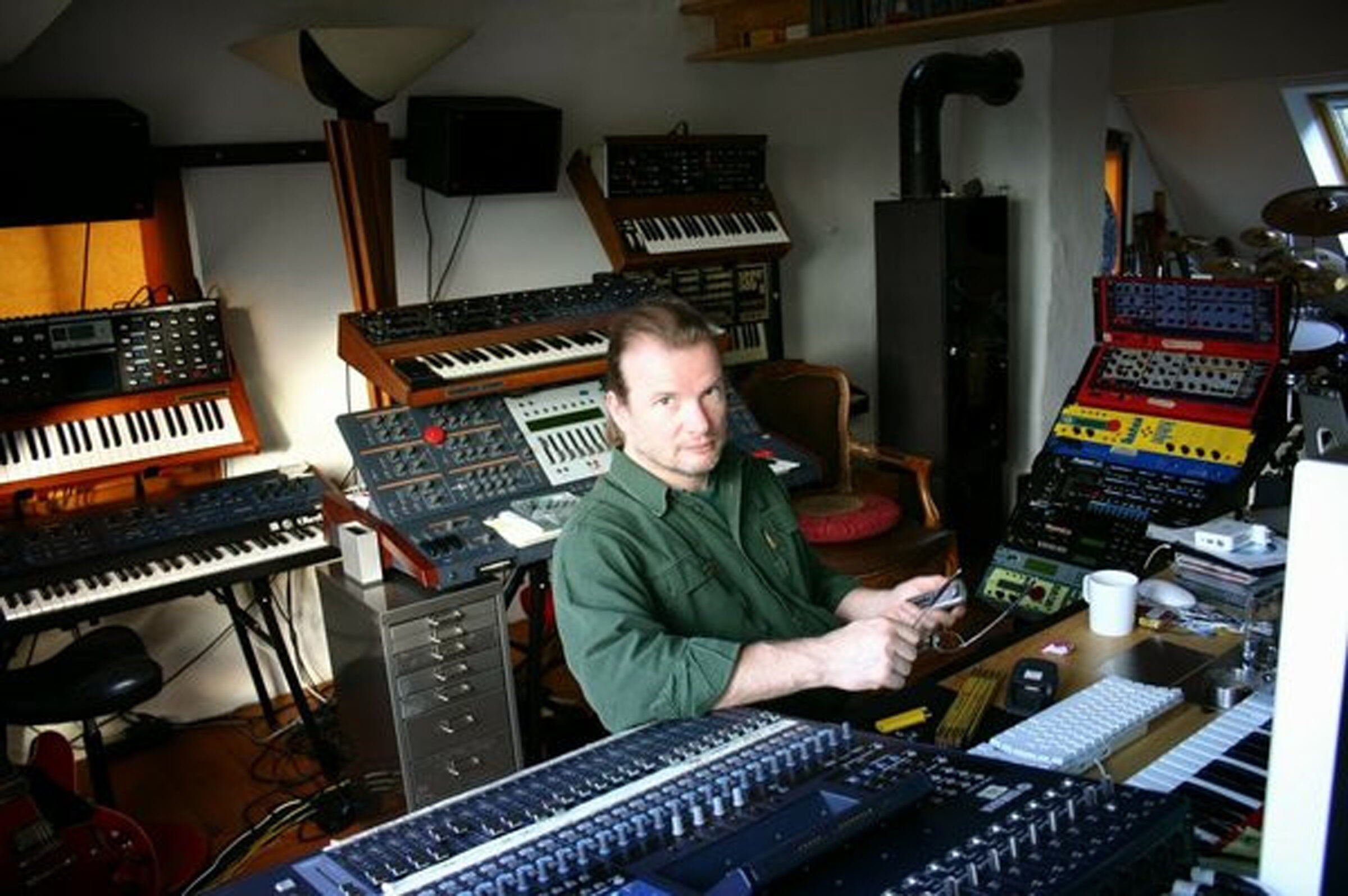
MY PERSONAL FAVORITES (TODAY)
One more thing to note before I share my list of favorites. Although it seems to be accepted these days, much to the chagrin of some of us, that CDs are no longer the most desirable music format, right up until a year or two before the pandemic they were still the main way that ambient music was sold and “discovered.” There were boutique labels out there like Hypnos, Infraction and the now-defunct but highly influential FAX label in Germany. Some other fantastic labels like Kranky Records in Chicago put out stellar ambient releases along with indie rock and flat out experimental titles; they became the home for Stars of the Lid and many others. Steve Roach, a “superstar” of the genre releases a ton of stuff on the big label Project, as well as his own personal “Timeroom” editions based in Arizona. So you could generally FIND the CDs if you sought them out, but… the limited sales potential of ambient caused many artists to release only limited editions of their work. FAX was known all along for this; label head Pete Namlook realized he could keep his costs down by releasing titles in editions of just 1,000 or 2,000. If they were popular enough to sell out, he had a separate label agreement to reissue such titles. That it happened QUITE often tells you that ambient had its devoted followers, for sure. And in the last few years of Fax (Namlook passed away in 2012, pretty much ending an entire sonic empire), Namlook released editions in a limitation of just 500. Nearly all of those sold out, with almost NO reissues, making many titles highly sought after and ultra expensive on Ebay, DISCOGS and elsewhere. Good luck even finding a lot of that stuff nowadays. The point is, the uniqueness of ambient and the way the internet allowed even obscure artists to be talked about and to get attention, meant that a high “collectibility quotient” was part of what drove more dedicated ambient fans to seek out various titles. I will always be grateful I followed an impulse one day years ago to purchase an evocative sounding limited edition on the Infraction label titled A WARM WOODEN HOLLOW. It was by an Ohio-based artist named Milieu. This release went on to become one of my absolute, all-time favorite “Blue Diamond” ambient recordings. But you simply cannot get it anymore at ALL; the artist himself has no more copies (I know, because I corresponded with him). So, this is the sort of thing that keeps ambient fanatics on their toes. Even a decade after Pete Namlook’s death, fans are seeking out his music and sometimes paying big bucks to do it. Sure, YouTube and other sites have made it possible to listen to a whole universe of ambient music without paying a cent. And virtually EVERY ambient artist either has a BANDCAMP presence or makes their music available as digital downloads quite reasonably. But if you want to OWN the music, on the CD (or in rare cases, vinyl) where you also got the artwork, and have it displayed properly on a handsome shelf, well, that often proved to be the most enjoyable place to have your ambient collection and revisit it in a tangible manner whenever you liked. That’s how I still do it. And I doubt I’ll give up my collection any time soon, because it truly enhances my life.

In every ambient survey I was involved with, there was some flexibility about how MANY “favorites” you submitted; most people went with ten or twenty, some of them complaining that it was hard to narrow it down to even THAT. On DISCOGS, I routinely see lists of “top 40,” “top 50” and even up to 100 favorites at times. There is a ton of music out there, folks! I saved in my email my own list of “20 All Time Favorites” which stayed fairly consistent after roughly 2012 or so. For our purposes here, I’m only going to share my TOP 10, as I find that a worthy enough challenge, and wanted to see if I’d still argue my case for each of my inclusions. Each is a bonafide gem, a work I not only can listen to any time but positively REVERE. Ambient is genuinely a compelling musical universe to explore if you have that kind of receptivity in your genetic makeup. So here then are some of the greatest titles produced in the genre, according to ME.

Brian Eno: AMBIENT 4: ON LAND Mysterious, dense landscape music that was so overwhelming to me, I wrote several essays about it and a long letter to Eno himself. The absolute fulfillment of a kind of “dream music” I imagined for years during expeditions out in nature. Eno had already raised the bar so high with DISCREET MUSIC and AMBIENT 1: MUSIC FOR AIRPORTS. But ON LAND created its own fresh spooky universe that only a handful of artists have been able to emulate.
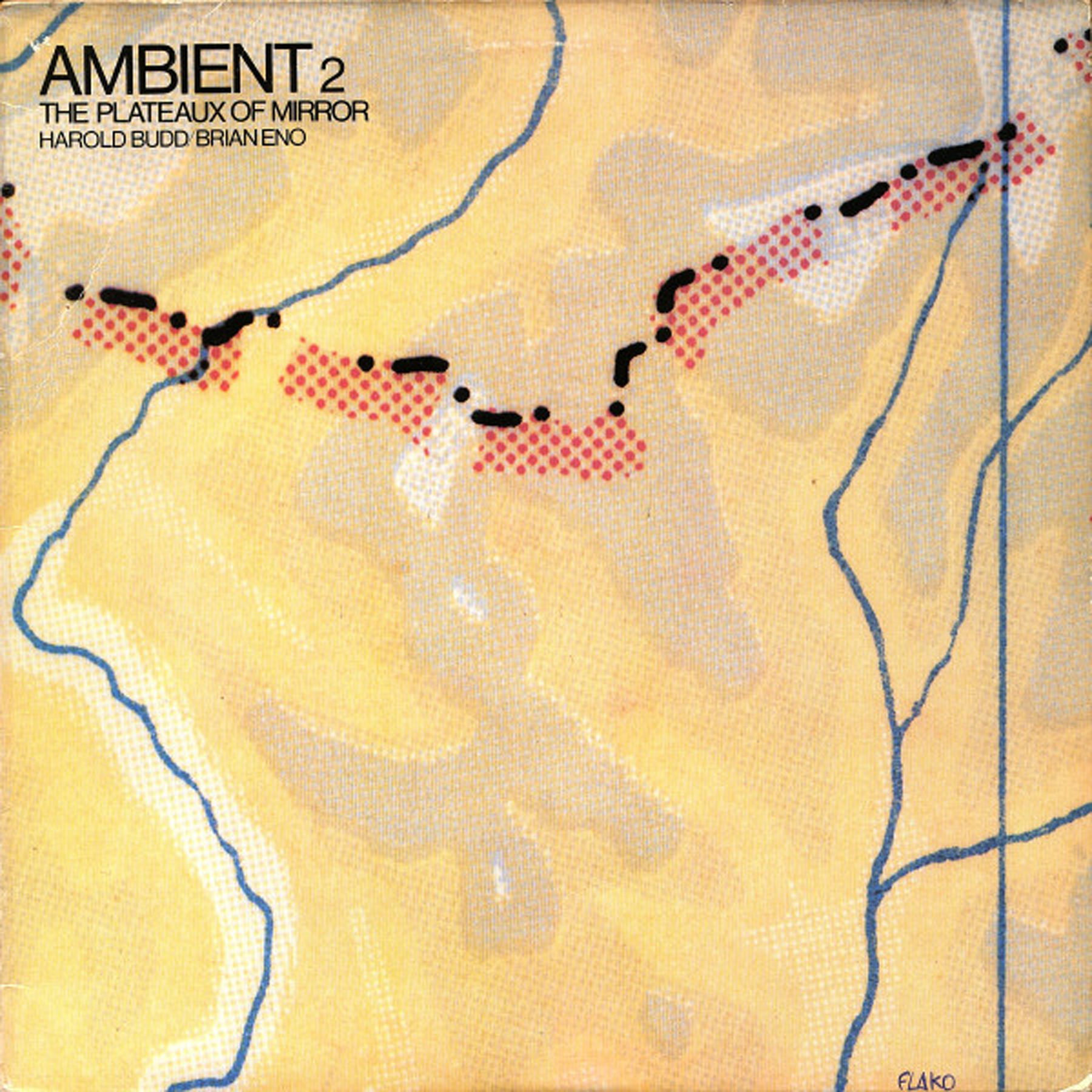
Harold Budd/Brian Eno: AMBIENT 2: THE PLATEAUX OF MIRROR Eno’s two collaborations with piano visionary and heir to the throne of Erik Satie, Harold Budd (THE PEARL is their second collaboration) are now legendary, and routinely make almost everyone’s list of favorites. You’ll see how high they place on the 2015 survey I did. I could have included either album on my list, but I’m going with this 1981 release for its stark minimalist beauty and the fact that the title track is still my very favorite short ambient piece of all time, which is saying a lot.
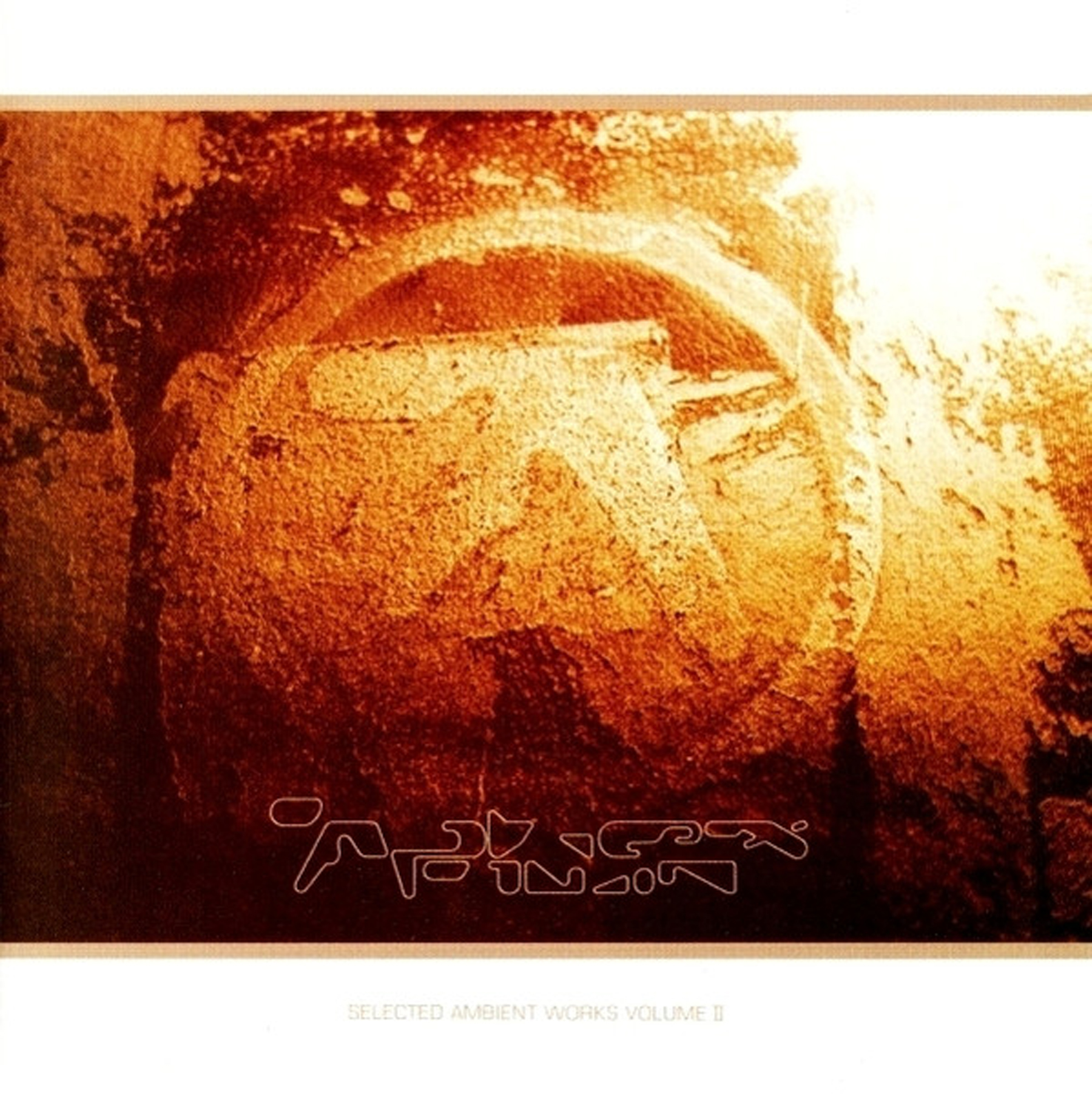
Aphex Twin: SELECTED AMBIENT WORKS VOLUME 2 This two-disc set has the distinction of being potent enough to inspire one of those little books in the popular 33 1/3 series, in this case a book by Marc Weidenbaum. Weirdo British electronica whiz Richard D. James has released music under different names for nearly a quarter of a century, and VOLUME ONE of the above title was a more accessible, influential and popular electronica album overall. But SAW II, as we enthusiasts call it, is a massive collection of highly original pieces inspired by lucid dreaming; it’s unsettling, diverse and absolutely devoted to its mission of giving the listener a strange and haunting ambient universe to explore. My experience listening to it through headphones on an overnight train journey out west is something I will NEVER forget.

Milieu: A WARM WOODEN HOLLOW God, do I cherish this out-of-print title. A few times listening to it while driving through winery country endeared it to me on a deep level. It has a blissful “aesthetic vagueness” to it that is perfect for a scenic drive, and Brian Grainger, the wunderkind behind this entity as well as others, including Coppice Halifax, has a knack for conjuring beautiful, unexpected soundscapes that he gives you time to revel in. It’s very hard to describe this brand of ambient. It’s melancholy, yearning and foggy, and unusually original for a primarily keyboard-based sound.
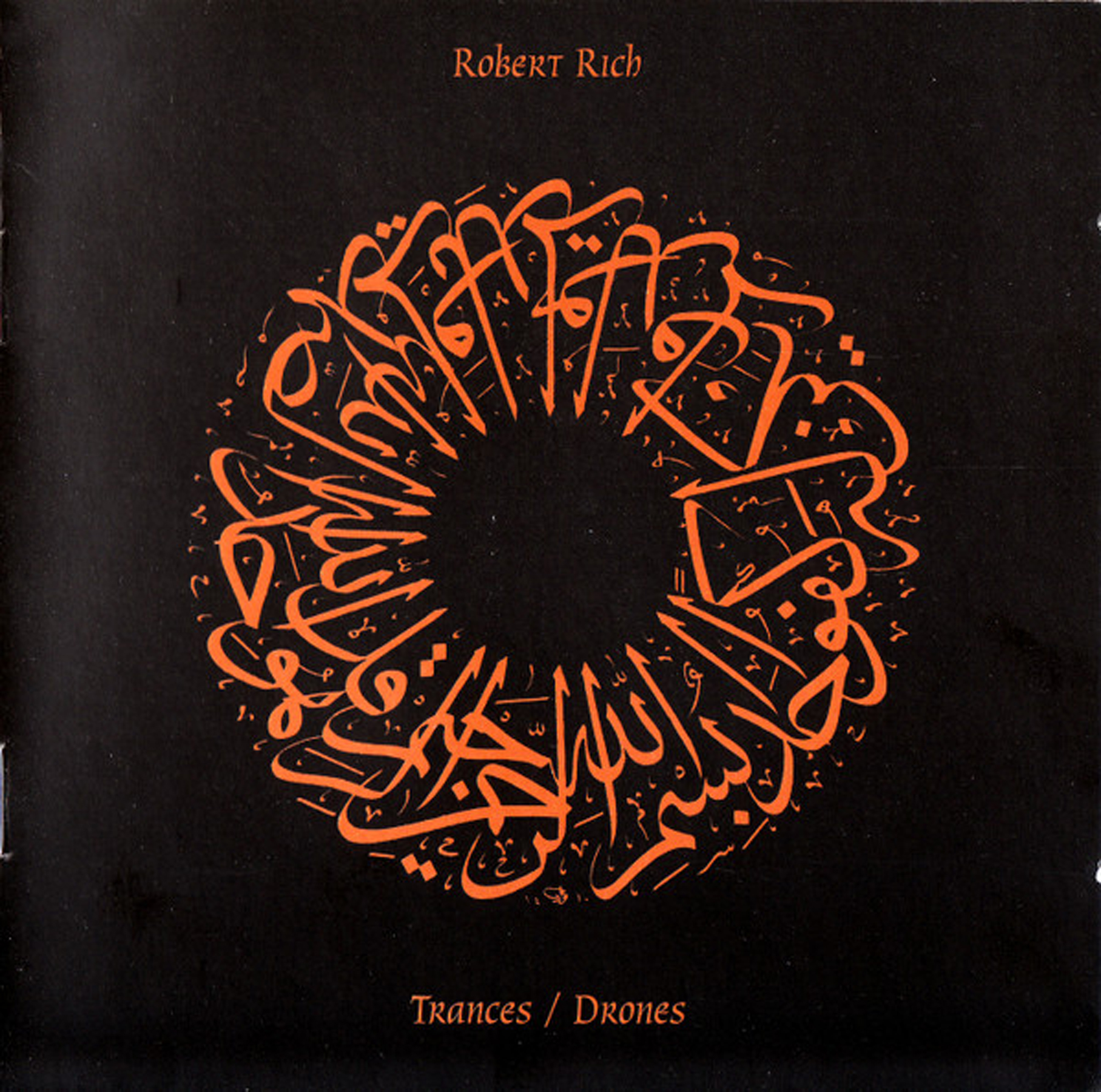
Robert Rich: TRANCES/DRONES Deep, immersive “widescreen” ambient. Rich has been a consistent composer/producer for decades, and his music often achieves a sonic depth that is unparalleled. What you get here are long, dark drones that could be suitable for meditation or a generally restless night. You’ll find yourself floating far away to this stuff, whether you intend that or not.

Pete Namlook: AIR 2 I personally regard the Fax label’s genius founder as the main person besides Brian Eno who truly “understood” the vast potential of what was being called “ambient” music. Namlook was THE most prolific composer/producer of the genre, with several HUNDRED titles to his credit if you include all the collaborations that also bore his name. AIR 1 and AIR 2 quickly became classics of “ethno-ambient,” featuring tribal percussion, French and Arabic sounds often hard to pin down, shakers and rainsticks, and all sorts of other instrumentation. AIR 2 is beautifully listenable and hypnotic, and certain to be unlike anything you’ve ever heard. It’s intended to be a “journey without moving,” although something will sure move inside you when you listen to this masterpiece.

Steve Roach: MYSTIC CHORDS AND SACRED SPACES Roach is the MASTER of modern ambient exploration. He’s the most prolific living composer in the realm, and his Timeroom studio in the southern Arizona desert is now legendary, as are his rare live concerts. MYSTIC CHORDS is a massive four-CD set that includes both short pieces and side-long sonic journeys; it’s completely and totally immersive. And I love it especially for pieces like “Wren and Raven” which use bird calls and other natural sounds in the most organic, hypnotic manner. You probably can’t even get through all this epicness in one sitting, but as a powerful, richly textured ambient journey, it has very few peers.
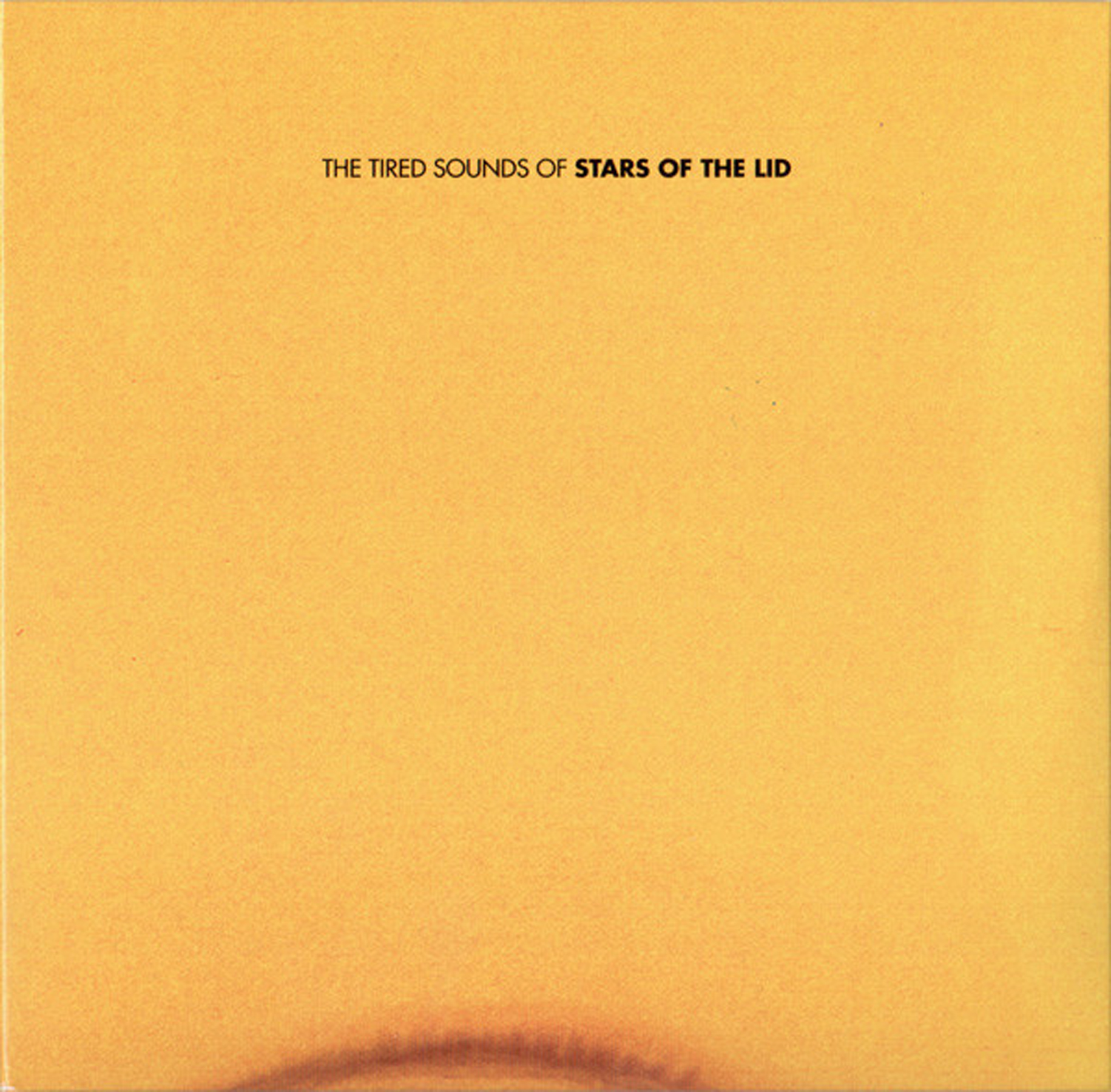
Stars of the Lid: THE TIRED SOUNDS OF STARS OF THE LID Adam Wiltzie and Brian McBride seem like humble, ordinary guys, but together they created a strings-based ambient entity that rapidly earned them a large cult following. They truly created their own style, and largely let their expansive, haunting music speak for itself. This very popular album, a two-record set with a striking yellow cover, has sad-sounding titles like “Requiem for Dying Mothers,” “Austin Texas Mental Hospital” and “The Lonely People (Are Getting Lonelier)”. Whatever you might imagine such music to sound like, chances are it DOES, or goes beyond that. At least a few moments in this set are among the most beautiful moments I have ever heard in ANY musical genre, and the works of SOTL nearly ALWAYS rate high in lists of ambient favorites.
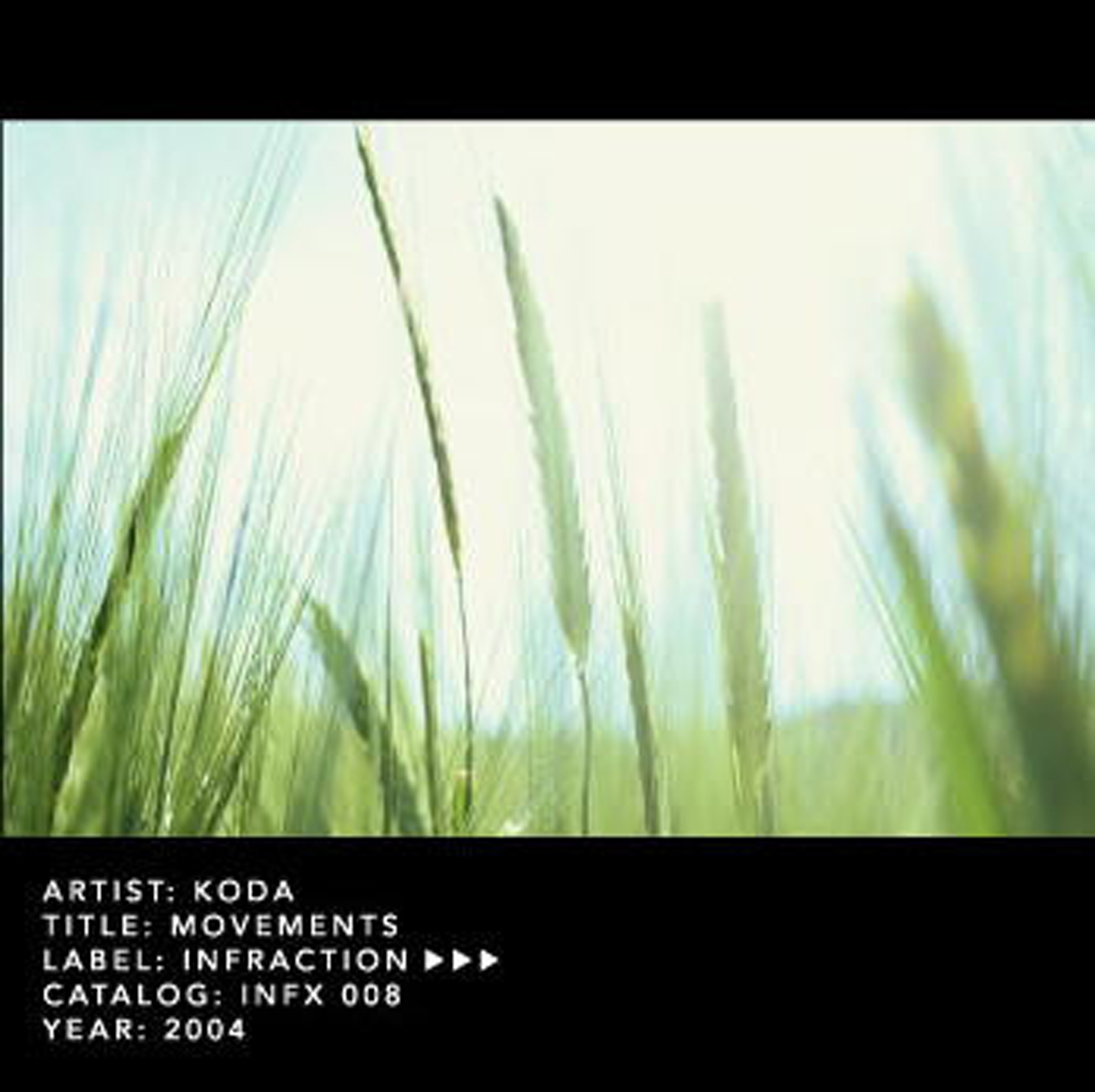
Koda: MOVEMENTS If there is such a thing as “friendly, reassuring ambient,” this disc might be a good example. The music here is not headed for outer space or darker realms of the imagination; instead, it is grounded, ethereal tonally accessible music for what’s here and now, observable right in front of you. It soothes, whereas an artist like Aphex Twin or Lustmord might terrify. Another gem on the always reliable Infraction label, this summation from the Amazon page should suffice: “MOVEMENTS is a work of drifting, beautiful and ethereal soundscapes with a lightly classical leaning and it really does do the job in style… there’s a deeply enthralling tone to the whole work.”

James Johnson/Stephen Phillips: LOST AT DUNN’S LAKE I’m not sure how available this one is anymore, but I’m choosing it because it SO captures the feeling of being in a remote cabin on the shore of some northern lake while a consistent rain falls. Repetitive, moody and delicate, this is a good example of ambient’s ability to totally capture a specific mood and setting. Back in the Hyperreal glory days, the members would exchange recommendations and often write lovely things about their favorites. A guy whose name I can’t remember wrote an incredibly haunting description of this album and how it took him back to days of camping with his father when he was young, somewhere in Minnesota or Wisconsin. Wish I could find that passage. It was perfect to convey the sleepy, nostalgic mood of this “lost” ambient classic.
